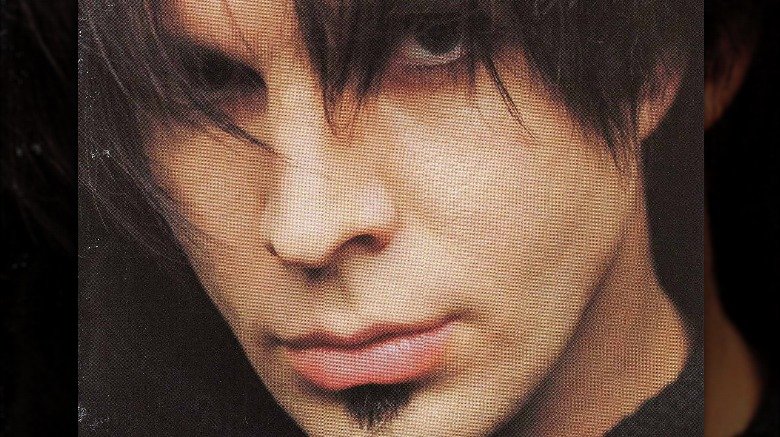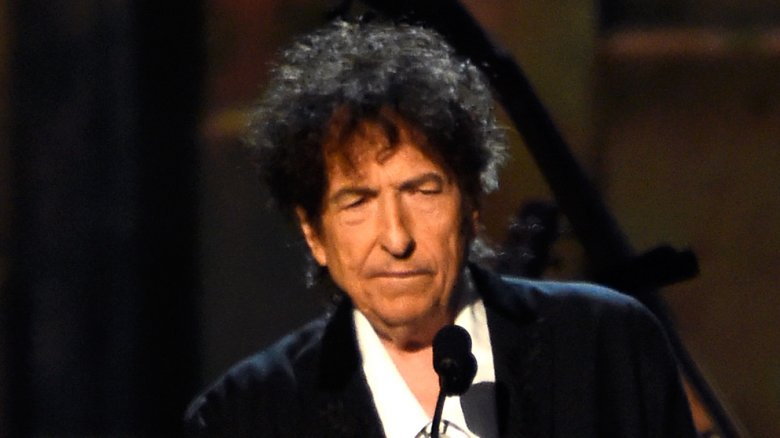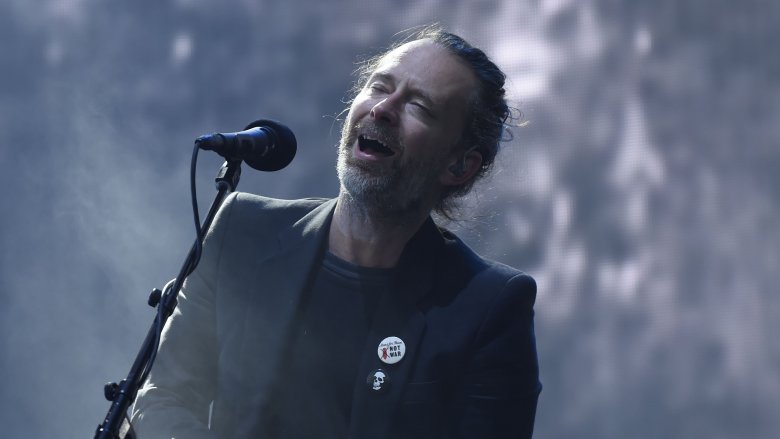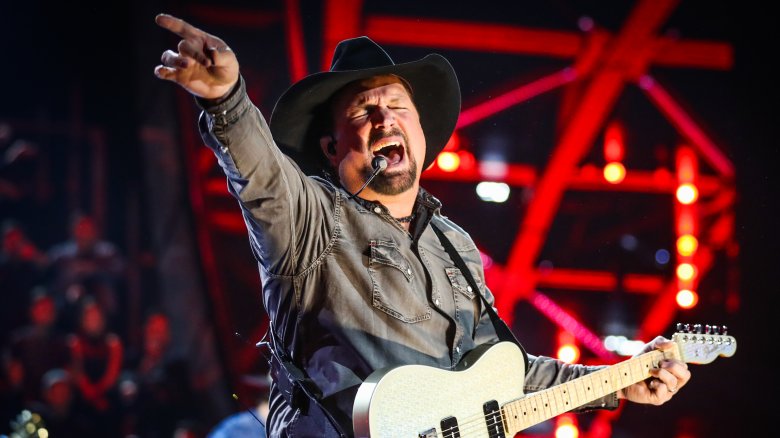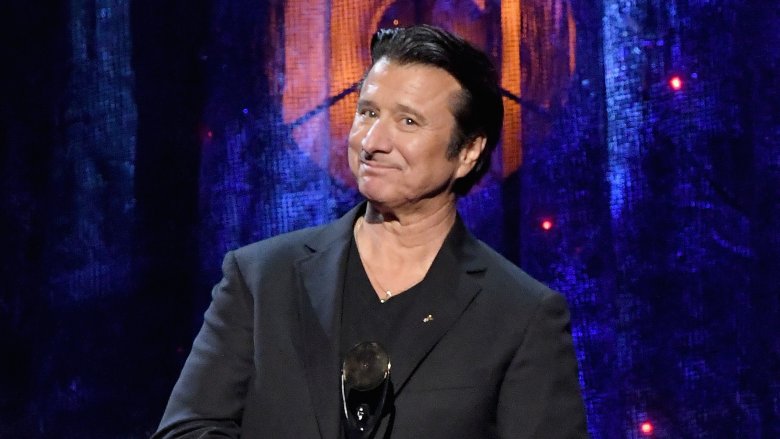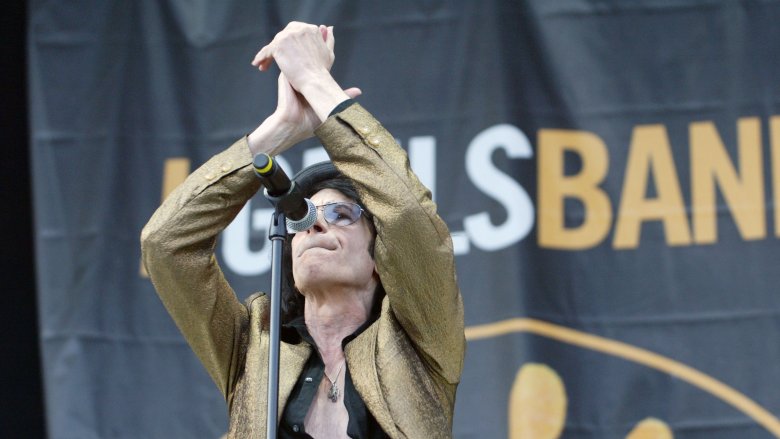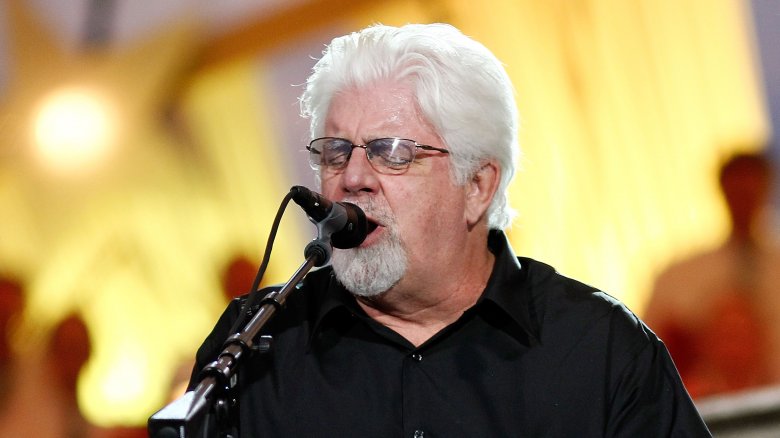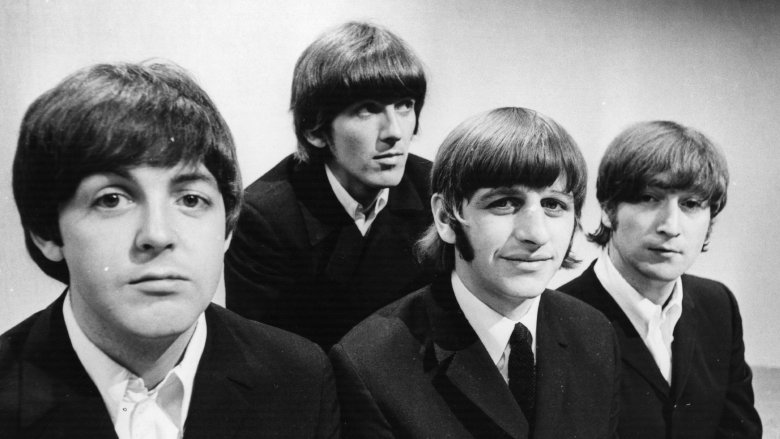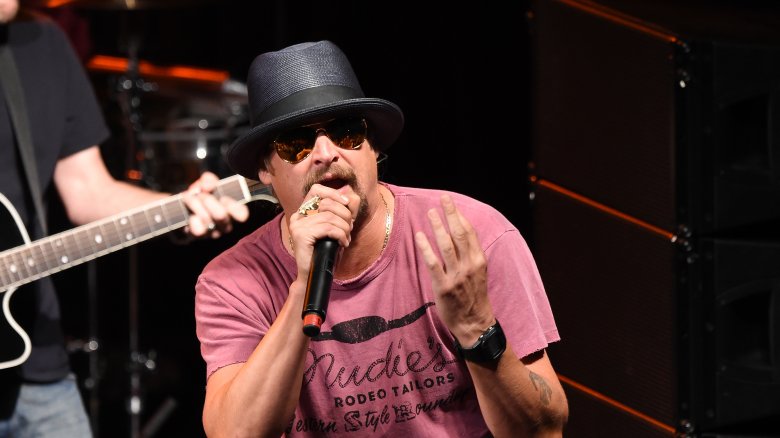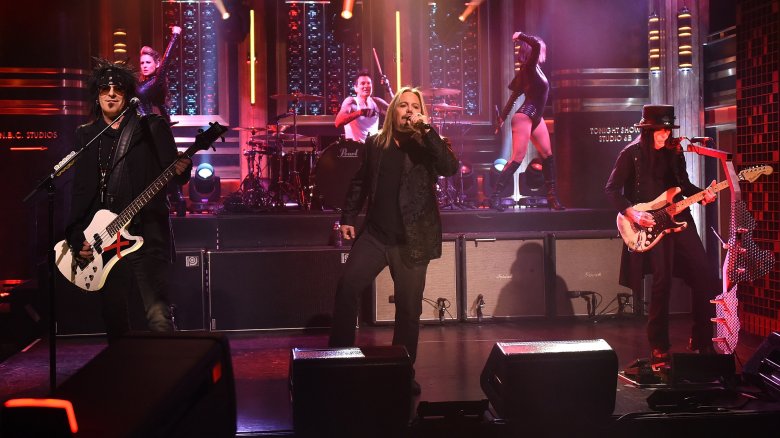Musicians Who Bait-And-Switched Their Fans
"I'm sick to death of people saying we've made 11 albums that sounds exactly the same," AC/DC's Angus Young is reputed to have said. "In fact, we've made 12 albums that sound exactly the same." But not every act can be as successful mining the same territory over and over again as AC/DC (or the Ramones, who had a similar don't-mess-with-the-formula approach). Plenty of artists have changed their sound over the years, sometimes turning off their old fans, but also sometimes winning new ones.
We're not looking at those who added synths in the '80s or went in the opposite direction and stripped back with a return to their roots. Nor are we focusing on bands who gradually evolved with the times but kept the essence of their sound like, say, the Rolling Stones, who never strayed far from their R&B core for too long. We're talking about bands that made hard left turns into uncharted territory for which they may or may not have been equipped.
There are all sorts of reasons these happen. Oftentimes, a new band member can bring different musical ideas, but they can also happen because an artist wants to find a more mainstream audience. Then there are some that were motivated by entirely different reasons. Here are bands that bait-and-switched their fans.
Bob Dylan goes electric
Bob Dylan's career has taken so many turns that it's probably easier to name genres he hasn't tried. But it all started with his switch from folk to rock in 1965.
Perhaps his decision wouldn't have caused so much controversy if his first single, a rock song called "Mixed-Up Confusion," hadn't stiffed upon its 1962 release. While there's still some question as to whether the reaction at the Newport Folk Festival in July 1965 was the result of Dylan picking up an electric guitar or complaints about the mix, fans were coming to his U.S. concerts to voice their displeasure about his "abandonment" of his folk roots.
Tensions boiled over the next May during his tour of England. The opening solo acoustic set was well-received, but the booing and derisive clapping started when his backing group, who would later gain fame as the Band, began performing. In Manchester, somebody yelled out "Judas!" Dylan shot back, "I don't believe you. You're a liar!" He then instructed his musicians to "play f*ckin' loud" and launched into a vicious version of "Like a Rolling Stone" to close out the night.
Since then, he's followed his muse wherever it has taken him, from country to a born-again Christian phase to a pair of acoustic records of folk standards. And even in the later stages of his career, he's still scratching heads. In 2015, at age 73, he released Shadows in the Night, the first of several albums of songs from the Great American Songbook.
Radiohead took a left turn away from grunge
The defining sound of alternative rock in the post-Nirvana world included mumbled, self-loathing lyrics and a quiet-verse-loud-chorus structure. So it made sense that when Radiohead burst through with their 1992 debut single "Creep" that they were thought of as a British version of a grunge band.
But with their next album, 1995's The Bends, they began incorporating more keyboards and textured production, and it reached full bloom with the follow-up, OK Computer. They've continued to explore new sonic ground with every subsequent release and, while their experiments may have lost them some of their initial flannel-clad fans, their legacy as one of the most innovative and influential bands of the '90s and beyond is secure. In 2019, they were inducted into the Rock & Roll Hall of Fame.
As for the song that made them famous, Radiohead more or less disowned "Creep" as they entered the '00s, going three major tours (2000, 2008, and 2012) without even performing it. In June 2016 they played it during the encore of a Paris show for the first time in seven years.
Garth Brooks creates a pop star and fails
Garth Brooks' commercial dominance in the '90s is even more impressive when you realize that, unlike previous country artists like Johnny Cash, Dolly Parton, and Kenny Rogers, he was repeatedly topping Billboard's album chart without the benefit of a single that crossed over into the pop realm. Perhaps that explains why he chose to end the decade by creating an alter ego, a fictional rock star named Chris Gaines.
The idea was for Brooks to star as Gaines in a movie called The Lamb, which opens with Gaines dying, and then a fan tries to prove that he was murdered. An intricate backstory was created, as was an album designed to serve as the fictional character's greatest hits. Brooks slimmed down, donned a wig, and grew a soul patch that made him look like a late '90s alternative rocker. NBC got on board — Brooks hosted the November 13, 1999, episode of Saturday Night Live with Gaines as the musical guest, and a special, Garth Brooks... In the Life of Chris Gaines, was broadcast — as did VH1, producing a Gaines-themed episode of Behind the Music.
But even though it gave Brooks a crossover hit — the Babyface-esque ballad "Lost in You" peaked at No. 5 on the Hot 100 — it confused his fan base, and rock fans stayed away. Wide Open Country notes that six months after the album's release it had only sold 700,000 copies. It eventually went double platinum, but that was still well short of Brooks' usual numbers. The Lamb was never produced.
When Prince cleaned up his act
In the '80s, Prince famously angered social conservatives with his salacious lyrics in songs like "Darling Nikki," "Sister," and "Head." But in the mid-'90s, as he was going through a public feud with Warner Bros. that saw him write "Slave" on his face and change his name to an unpronounceable symbol, he was also undergoing a spiritual crisis.
With the help of Larry Graham, the legendary bassist for Sly & the Family Stone, Prince joined the Jehovah's Witnesses in 2003, and it had a profound effect on his life and music. Where his music had previously been a mixture of the sacred and the profane, now he was cutting out the second half of the equation. He stopped swearing and, in concert, either refused to play or changed the lyrics to songs that contradicted his new mindset. ("The Cross," for example, became "The Christ.")
After Prince's death, Roots drummer Questlove wrote an essay for Rolling Stone where he relayed a story about how serious Prince was about his new mindset. They were working together at Paisley Park, Prince's studio and residence in Chanhassen, Minnesota. Questlove swore in front of Prince, who then made him put money in a jar. Normally the cost was a dollar, but Prince fined him $20 because Questlove was rich. "Hey, you taught me how to curse when I was little," Questlove protested, as everybody but Prince laughed.
Journey took the long way to the top of the charts
Journey started with impeccable credentials for a progressive jazz fusion band. After all, guitarist Neal Schon and keyboardist/singer Gregg Rolie started out in Santana (that's Rolie's voice on "Black Magic Woman" and "Evil Ways"), drummer Aynsley Dunbar had worked with Frank Zappa and bassist Ross Valory had done a stint in the Steve Miller Band. But their records failed to find an audience. On the suggestion of their label, Columbia Records, they looked for a more traditional frontman to share vocals with Rolie as they went out to promote 1977's Next, and found one in Robert Fleischman. But the chemistry with their new singer wasn't there, and toward the end of the tour they fired him and replaced him with Steve Perry.
The move paid off immediately. Perry not only brought his voice, but also his songwriting skills. He co-wrote eight of the 10 songs on Infinity, including the classic "Lights," as they transitioned to a more traditional rock sound. They continued to grow in popularity over the next couple years and after only one lead vocal on 1980's Departure, Rolie left and was replaced by Jonathan Cain of the Babys. Their first release with the new lineup was Escape, which featured the hits "Don't Stop Believin'," "Stone in Love," "Who's Cryin' Now" and "Open Arms." Journey never looked back.
J. Geils musta got lost on the way to the reunion
In 2012, the J. Geils Band announced a tour with four of its original six members, but minus guitarist John Geils. True, Geils wasn't the frontman. That was Peter Wolf, and Wolf and keyboardist Seth Justman collaborated on most of their original material, but Geils was still the founder of the band and its namesake.
As Wolf, Justman, bassist Danny Klein, and harmonica player Richard "Magic Dick" Salwitz said in a statement at the time, it was Geils' new label that forced their collective hand. "The band is challenging Francesca Records' baseless claim to ownership and control of the rights to the name 'J. Geils Band.' Unfortunately, John Geils' decision to align with Francesca Records has hindered a working relationship with The J. Geils Band."
"What Jay did behind everyone's back was very disturbing," Wolf later said, also calling it "a very deceptive thing. ... The name represents the group as a whole."
Naturally, Geils sued the others, saying he had been granted the rights to the name three years earlier, although the band countered with the claim that he had done so without their permission, and that they had signed a document preventing any individual member from using the band's name for commercial purposes. The suit was eventually settled ("to the benefit of both parties," Geils said in 2015), and he remained out of the group for the rest of his life. He died in 2017.
The Doobie Brothers smoothed things out
The Doobie Brothers' versatility, with Tom Johnston's riff-rockers ("China Grove," "Long Train Runnin'") balanced by Patrick Simmons' country-blues side ("Black Water," "South City Midnight Lady"), was part of their appeal in their early days. But by 1975, five albums into their career, a bad ulcer forced Johnston off the road.
"Luckily I quit when I did," he told Rolling Stone, "'cause when I got home, I started throwing up blood. I went, 'Aaaaaa! Oh my lord!' I made it to the hospital posthaste, whereupon I actually died — I was bleeding internally and they lost my heartbeat temporarily, but they brought me back."
Fortunately, they didn't have to look far for replacements. Steely Dan guitarist Jeff "Skunk" Baxter, who'd already guested on their two previous albums, was looking for a new gig as Donald Fagen and Walter Becker were giving up performing to concentrate on their studio work. But Baxter wasn't a singer, so the band also brought in Michael McDonald, who had been a hired gun on Steely Dan's tours.
The two new members brought their instrumental prowess, and future five-time Grammy winner McDonald also contributed one of the all-time great blue-eyed soul voices and his songwriting chops. With 1976's Takin' It to the Streets, the Doobie Brothers began a transformation from Bay Area biker band to a smooth, keyboard-based sound that would eventually be defined as "yacht rock." By 1979's Minute by Minute, McDonald was now responsible for the bulk of the material, including the No. 1 smash "What a Fool Believes," although the band split up a few years later.
The Beatles set the bar for growth
The Beatles were so prolific and versatile that, even all these years later, it's hard to believe that their recording career lasted only seven years. More importantly, they defined the terms by which a pop group could grow, both as musicians and as people.
You could see it in their first U.S. press conference. At a time when rock stars weren't expected to have personalities or opinions, they responded to condescending questions about their hair with enough mockery that even the jaded reporters had to laugh. Sure, sometimes their interviews got them into trouble, but they proved that musicians could thoughtfully weigh in on the important topics of the day.
And then there was the music. Almost as soon as their career had begun, they were looking for new ideas beyond their two-guitars-plus-bass-and-drums sound. Encouraged by producer George Martin, orchestral instruments started working their way into the mix on 1965's Help!, with Indian textures arriving within the year. All those sounds came together, with the aid of psychedelic drugs, on Revolver, Sgt. Pepper's Lonely Hearts Club Band, and Magical Mystery Tour. Then, just as quickly, they redefined themselves again, broadening their scope even further on The Beatles and reaching full maturity on their last two efforts, Abbey Road and Let It Be.
Taylor swiftly went for pop
By the time she was 22, Taylor Swift had three multi-platinum albums, six Grammys, and a handful of singles that had crossed over from country onto the upper reaches of the pop chart. Then, with 2012's Red, she grew up.
Although she had often written with others, they were primarily rooted in country, like Liz Rose and Robert Orral. Here, she was working with pop hitmakers like Max Martin and Shellback, who helped her craft three songs, including the smash hits "We Are Never Ever Getting Back Together" and "22." And her lyrics also showed that her high-school-crush stories were gone forever.
"On the precipice of adulthood," NPR wrote retrospectively, "Swift conveys all the excitement, confusion and heartache that comes with navigating post-adolescent life." This includes, they note, an acknowledgement of sex, saying that "up until this point, Swift's 'aw shucks,' good-girl persona relied on virginal assumptions. While her songs may have offered up insights on relationships, they were often based on puppy dog crushes or invoked fairytale tropes."
The gambit paid off handsomely, and her follow-ups, 1989 and Reputation, continued the partnership with Martin and Shellback, and also took on new pop-leaning collaborators, like OneRepublic's Ryan Tedder and Jack Antonoff of Fun.
Kid Rock stopped rocking
The self-proclaimed "American Bad Ass," Robert Ritchie, aka Kid Rock, became a huge star with his fourth album, 1998's Devil Without a Cause. With a hybrid of hard rock and hip-hop, he adopted the persona of an urban pimp, surrounded by scantily clad women and proudly identifying as redneck trailer trash on hits like "Bawitdaba" and "Cowboy," even though he was raised in the Detroit exurbs in a large estate by a father who owned several car dealerships.
But on the follow-up, Cocky, he showed off a country side, most notably his hit duet with Sheryl Crow, "Picture." His next few records saw him pivot away from rapping and redefining himself as a good ol' boy with a love of classic rock, with the Lynyrd Skynyrd-referencing "All Summer Long" reaching No. 4 on Billboard's Country chart.
By 2015, the outspoken star was all-but disowning his past, telling the Guardian, "Rap-rock was what people wanted at the time, and they still love those songs at shows. But it turned into a lot of bullsh*t."
Motley Crue couldn't bring back the magic
In 1992, Motley Crue parted ways with frontman Vince Neil, but their self-titled album with replacement John Corabi didn't even go platinum. Part of it could have been due to timing — a hair metal band releasing new music during alternative's ascension, especially with a new singer, was bound to sell less, especially after the gargantuan numbers put up by 1989's Dr. Feelgood.
But still, Elektra Records had recently given them a huge contract and were putting pressure on them for another hit. That meant, the label said, making the peace with Neil, even though they had already started tracking a new record, Personality #9, with Corabi. All parties agreed, and it seemed like the album, now titled Generation Swine, would be a return to form.
However, the songs were written for Corabi's voice, and Neil had trouble putting them in his own style. On top of that, the music was an attempt to keep current in a post-grunge world. Like its predecessor, Generation Swine only went gold, and it was Motley Crue's last release for Elektra, although it still has a champion within the band.
"I thought Generation Swine was a cool record, experimentally wise, but there's a lot on there that really doesn't sound like a guitar," guitarist Mick Mars said. "If I was like Robert Fripp of King Crimson or someone in Nine Inch Nails, it would have been cool, but for Motley it wasn't quite right."
A Fleetwood Mac with neither Fleetwood nor Mac
In October 1973, Fleetwood Mac, then still a blues band with a modest following, canceled a U.S. tour when it was learned that guitarist Bob Weston was having an affair with Mick Fleetwood's wife. As the band took a break while Fleetwood tended to his divorce, manager Clifford Davis nonetheless wanted his clients back out on the road and booked a tour. When all the members refused, Davis assembled a new group, called them Fleetwood Mac, and sent them to the U.S.
"I want to get this out of the public's mind as far as the band being Mick Fleetwood's band," Davis told Rolling Stone, even though the band was started by and partly named after the drummer. "This band is my band. This band has always been my band."
Prior to each show, Davis told the audience that Fleetwood had flown back to England on personal business and would be replaced by a substitute, even though that wasn't the case. Some fans complained and received refunds, while the real Fleetwood Mac consulted with their lawyers. When the dust settled, Davis was out and the band won the rights to their name. More importantly from the musical side, during the legal battle, the group moved to Los Angeles and found replacements for Weston and Bob Welch in Lindsey Buckingham and Stevie Nicks, changing the course of Fleetwood Mac forever.
